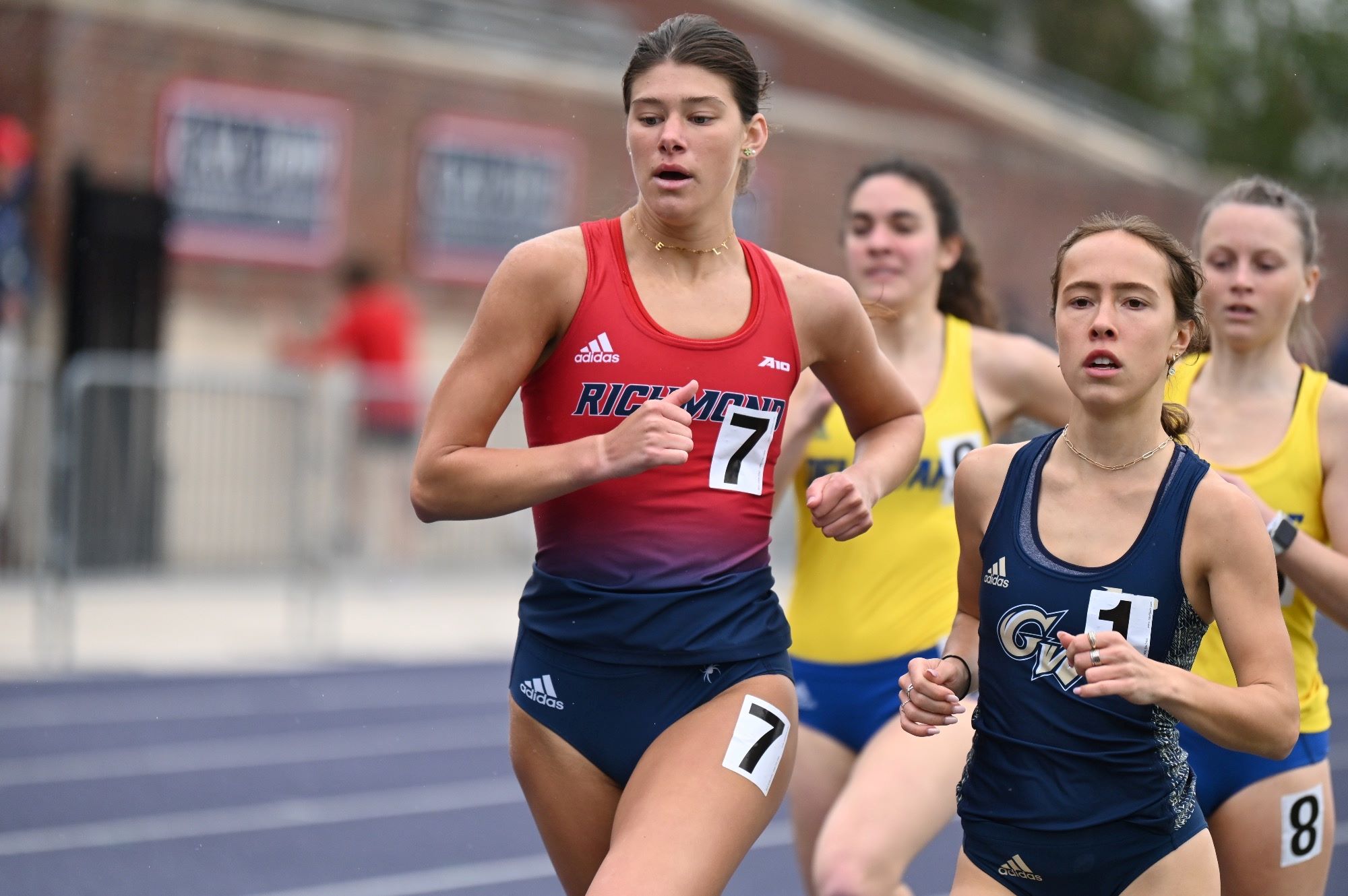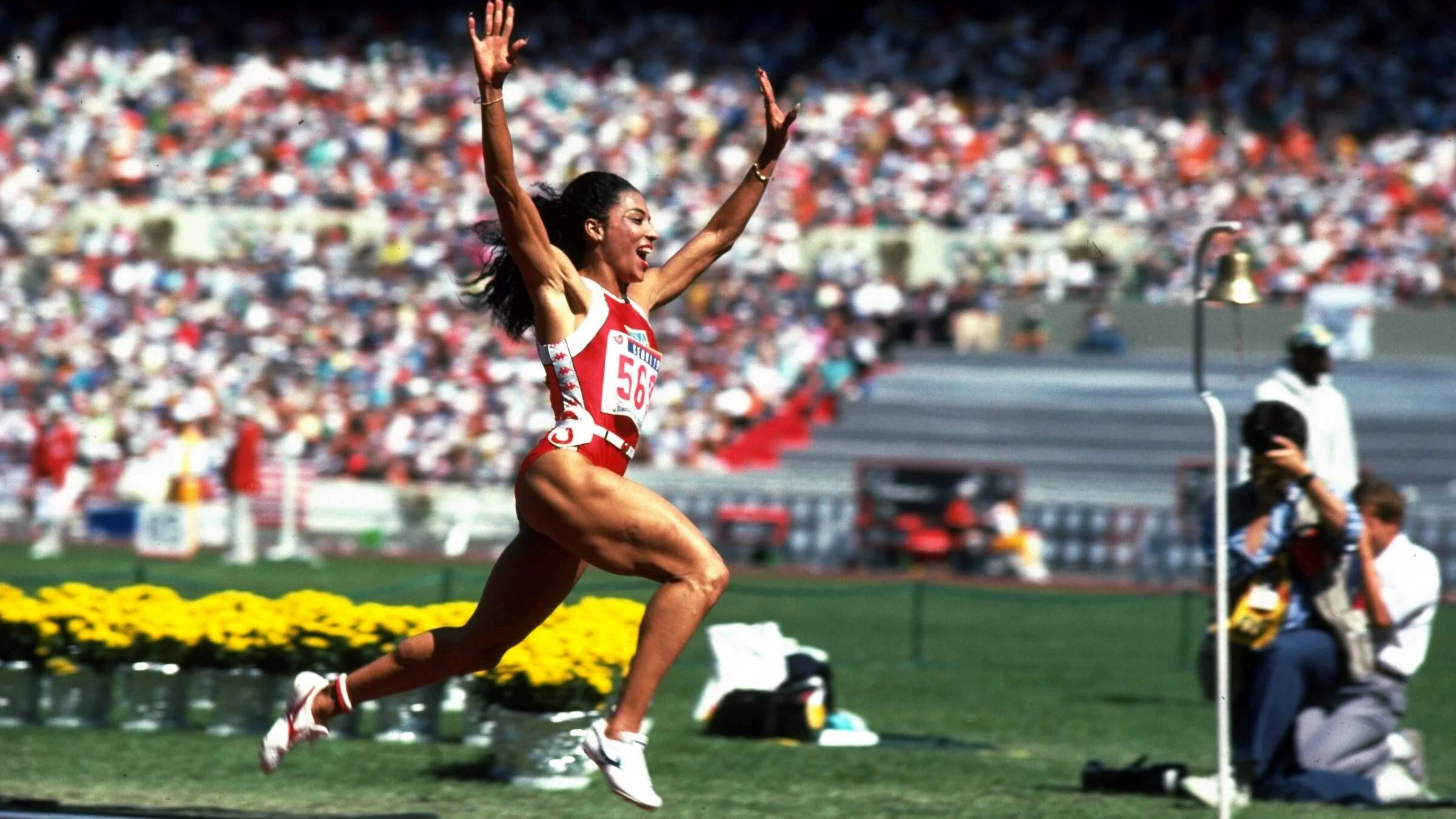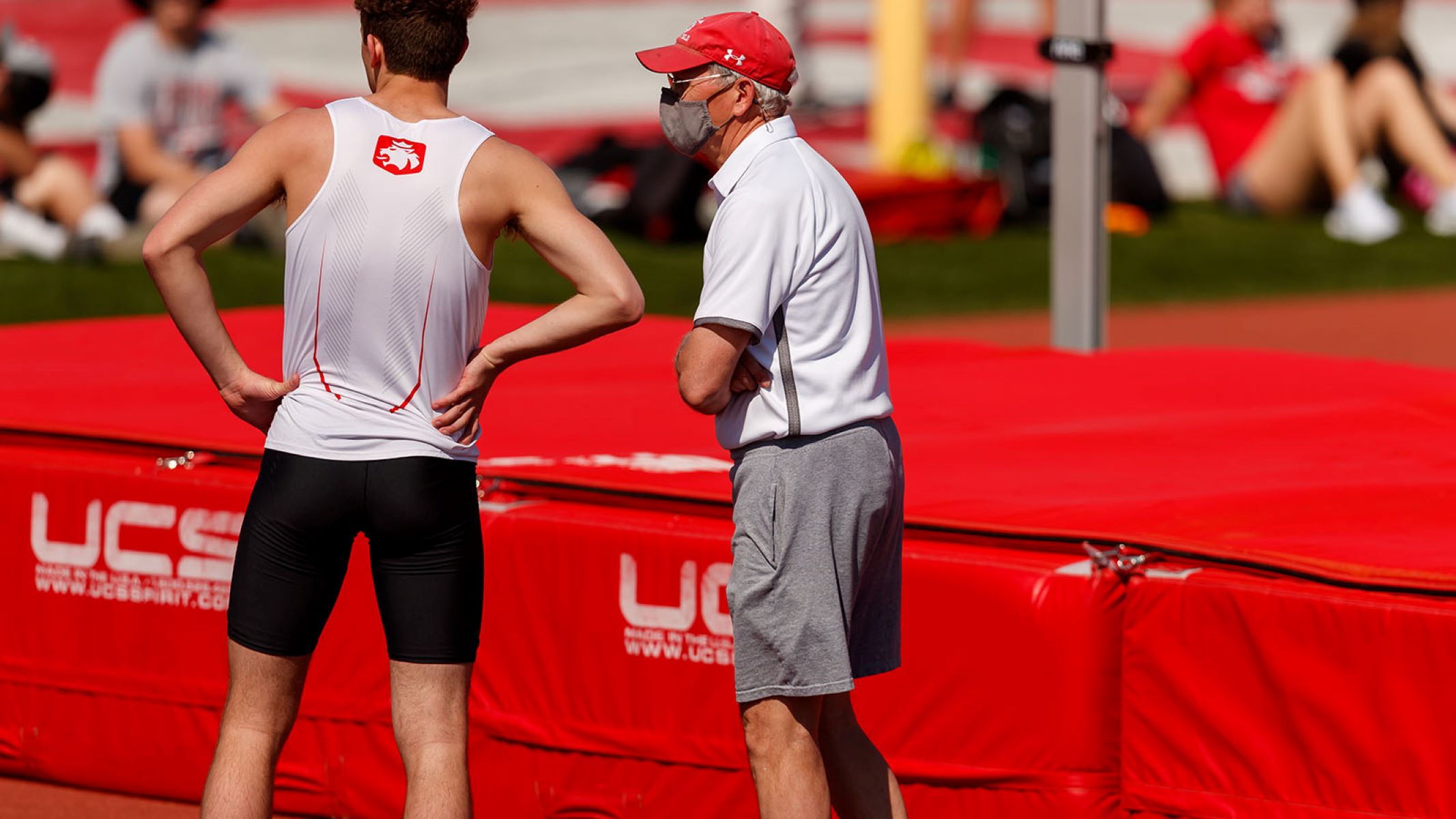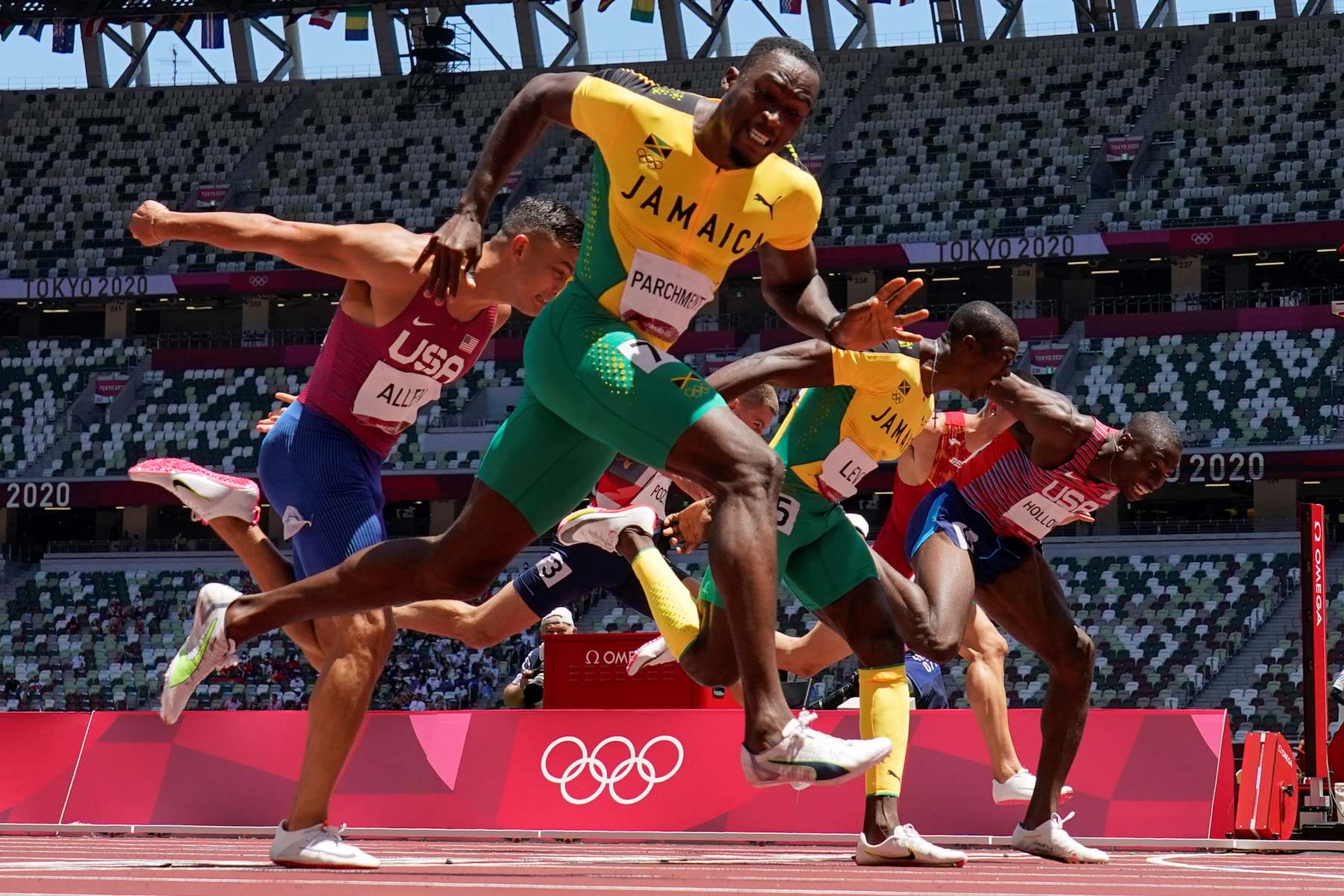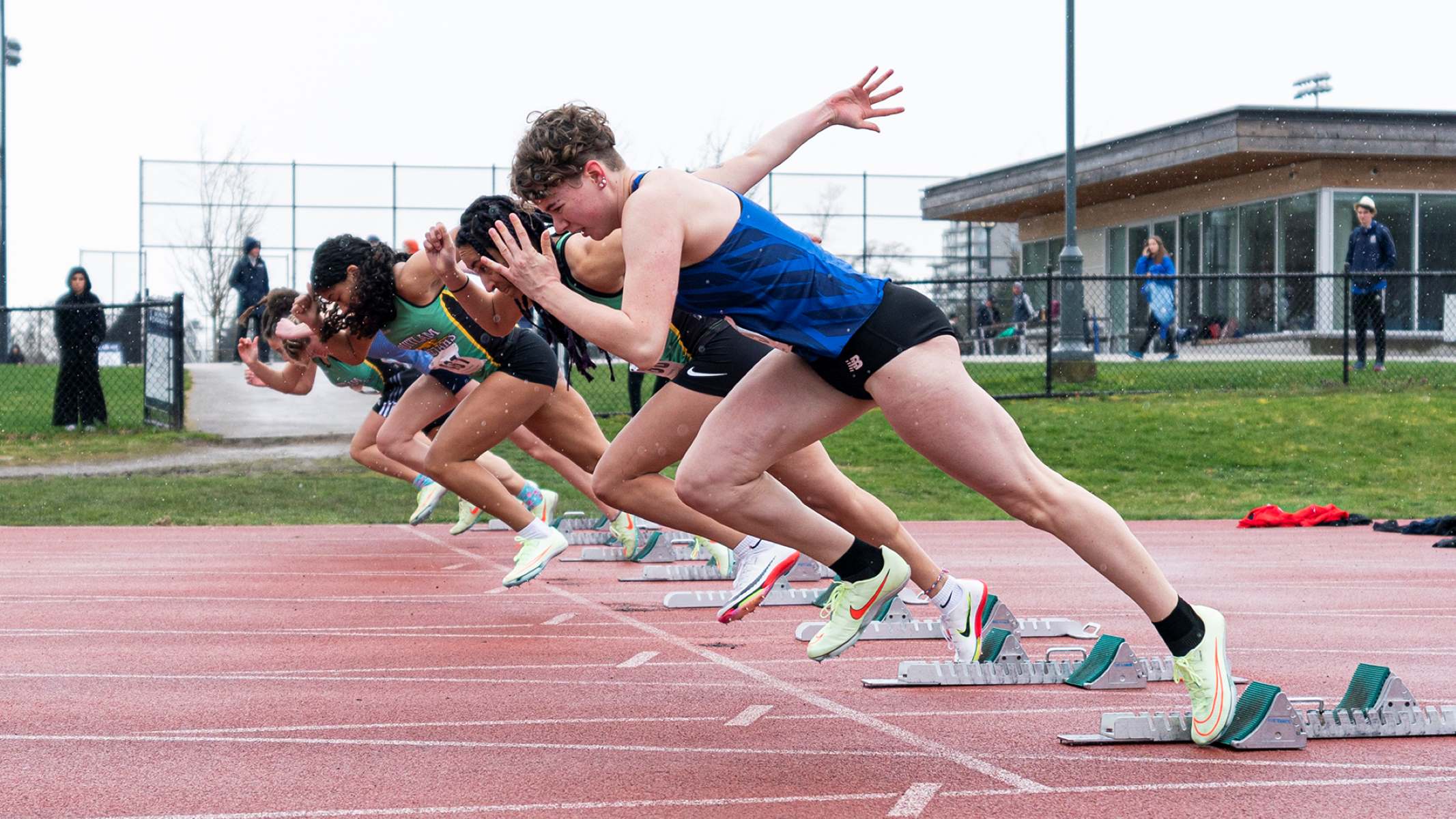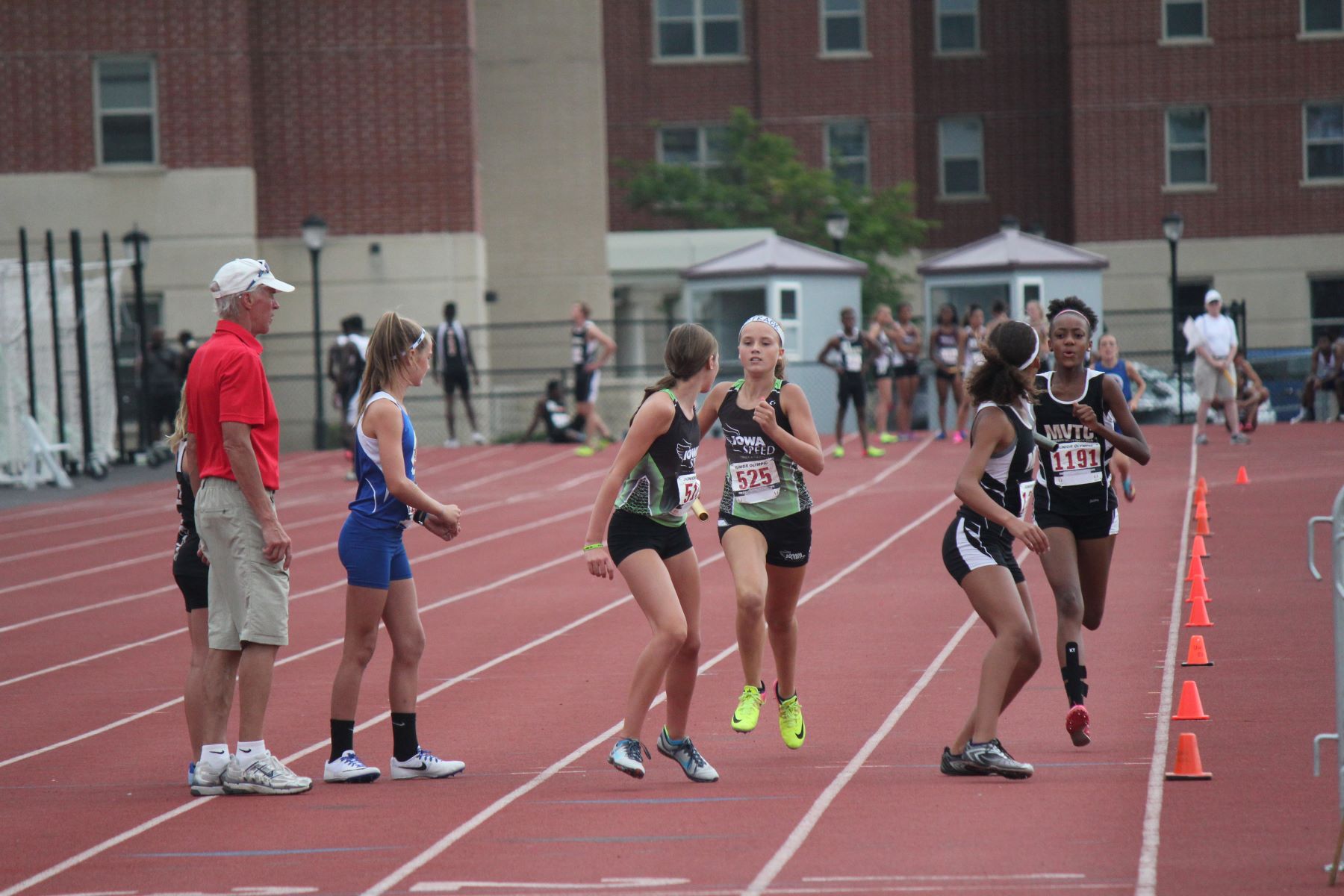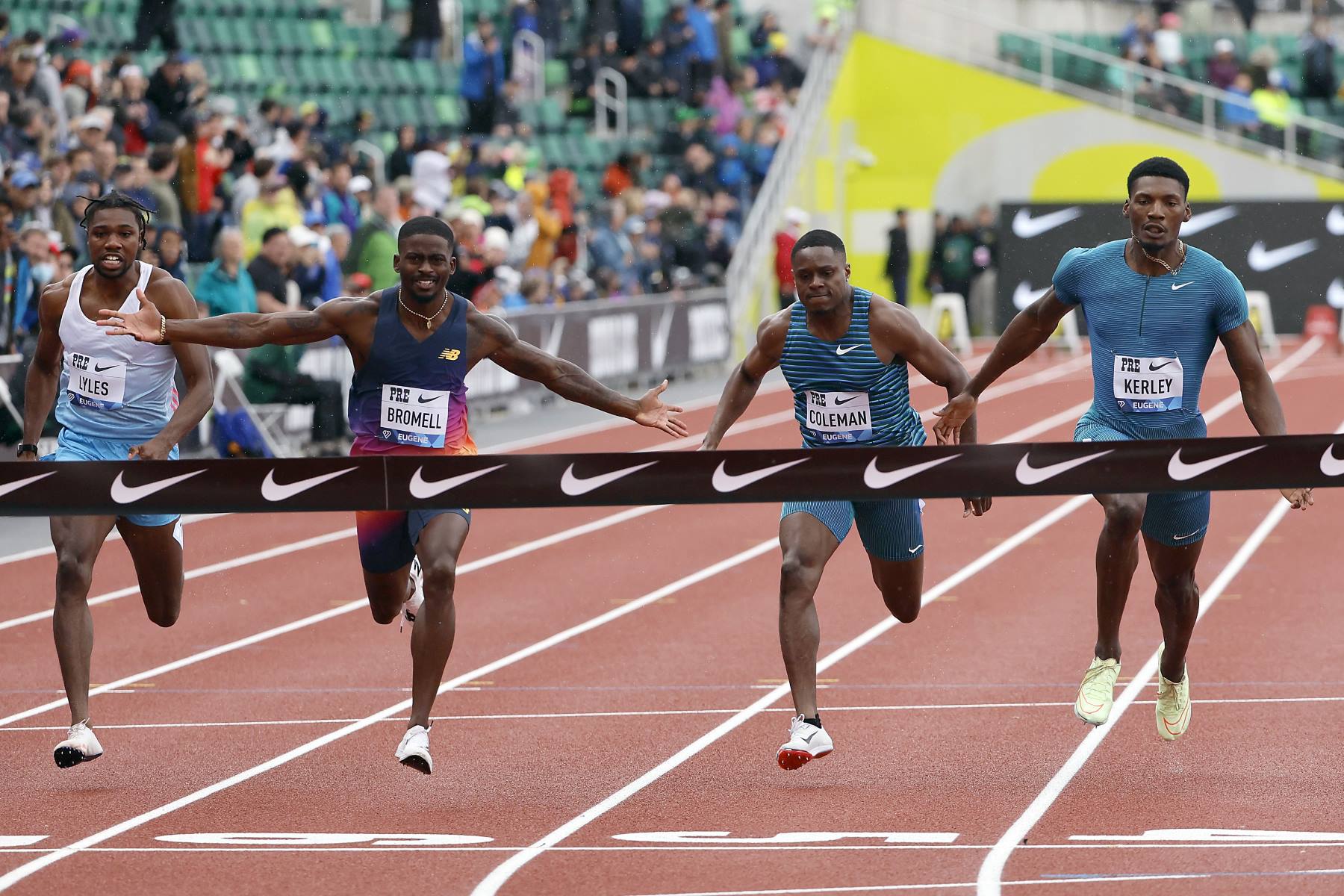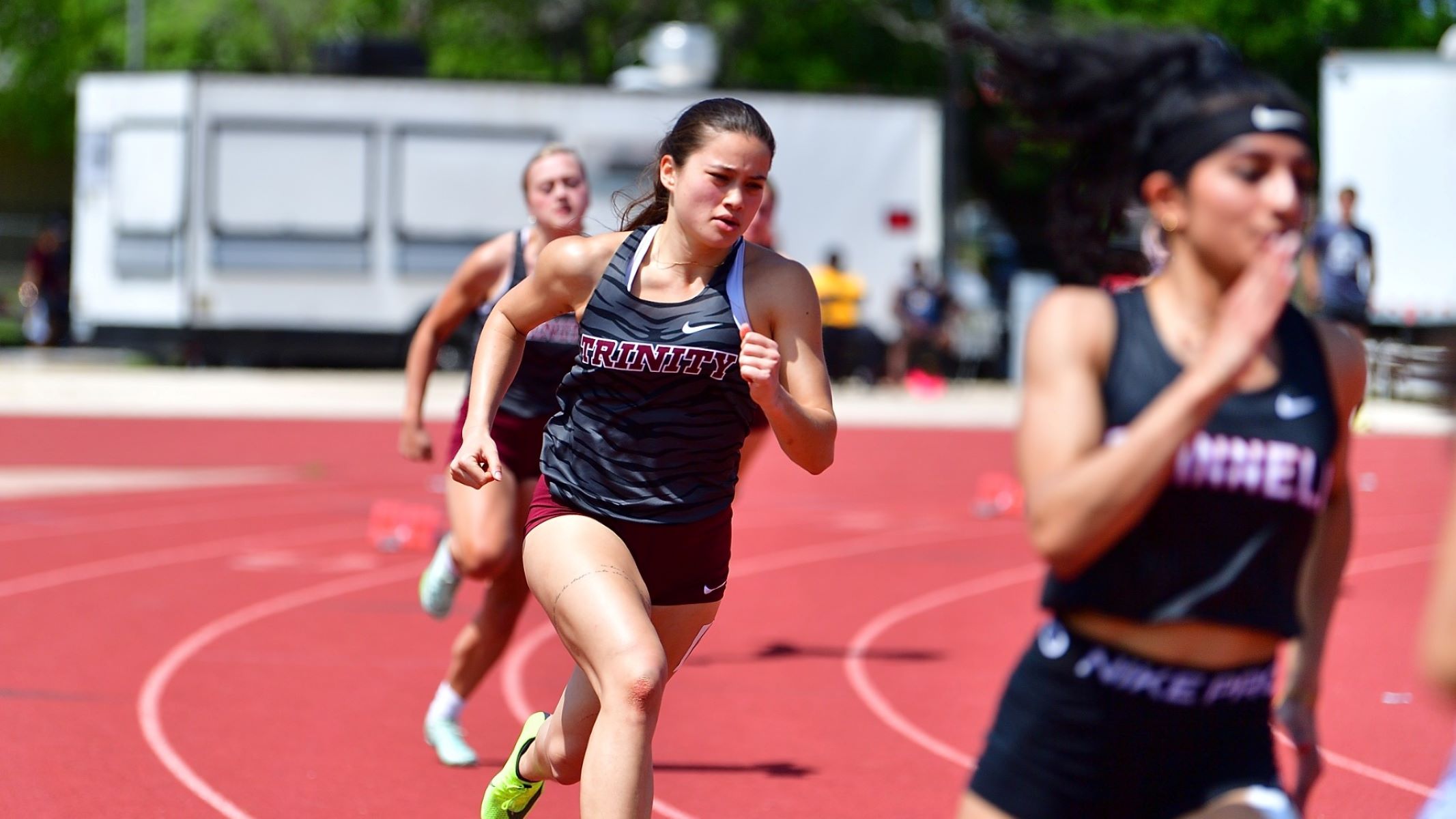

Featured
How Long Does Track And Field Last
Modified: January 2, 2024
Discover how long track and field events last and uncover the secrets of this featured sport, including duration, rules, and more.
Introduction
Track and field is a thrilling and dynamic sport that encompasses a wide range of events, from sprints and hurdles to long jumps and discus throws. Whether you’re a fan, an athlete, or an organizer, understanding the duration of track and field competitions is essential for planning and participation. In this article, we will explore the factors that affect the duration of track and field events, discuss the typical length of these competitions, and provide strategies for efficiently managing them.
Track and field events have a rich history that spans thousands of years, originating in ancient Greece and gaining popularity worldwide. Today, track and field meets are organized at various levels, from local school competitions to international championships. These events bring together athletes from diverse backgrounds, each vying for victory and personal records.
The duration of track and field competitions can vary depending on several factors. Firstly, the number of events on the schedule significantly impacts the duration. A track meet with multiple events, such as sprints, middle-distance, long-distance, hurdles, relays, and field events, will naturally take longer than a meet with only a few events.
Additionally, the level of competition and the number of participating athletes influence the duration of track and field events. International or national championships tend to have a higher number of participants, which can extend the overall duration of the meet. On the other hand, smaller local meets may have fewer athletes, resulting in a shorter duration.
The format of the track meet is another significant factor. Some meets follow a strict timetable with predetermined start times for each event, while others may adopt a more flexible approach, accommodating delays or changes due to unforeseen circumstances. The presence of qualifying rounds or heats also adds to the duration of the competition, as athletes compete multiple times to advance to the final rounds.
It is important to note that the length of each individual event within track and field can vary as well. For example, sprint races like the 100-meter dash and the 200-meter dash typically last for under 20 seconds, while longer events such as the 5,000-meter run or the marathon can extend for over an hour. Field events such as the long jump or shot put also have their own duration, which depends on the number of competitors and the time taken for each attempt.
Track and Field Events
Track and field events encompass a wide range of disciplines that test an athlete’s speed, endurance, strength, and technique. These events are divided into two main categories: track events and field events.
Track events primarily take place on the track, where athletes compete to cover a specified distance in the shortest possible time. These events include sprints, middle-distance races, long-distance races, hurdles, and relays. Sprint races, such as the 100-meter and 200-meter dashes, test an athlete’s explosive speed and acceleration. Middle-distance races, such as the 800-meter and 1500-meter runs, require a balance of speed and endurance. Long-distance races, such as the 5,000-meter and 10,000-meter runs, push an athlete’s stamina and mental fortitude to the limit.
Hurdles involve athletes running and jumping over a series of barriers of varying heights. The 110-meter hurdles for men and 100-meter hurdles for women are standard distances in international competitions. In relay races, teams of four athletes take turns running specific distances, passing a baton to the next runner within a designated zone.
Field events, on the other hand, take place in specific areas or fields. These events focus on jumps, throws, and combined events. Jumping events include the long jump, triple jump, high jump, and pole vault. These events require athletes to generate power and technique to achieve maximum distance or height.
Throwing events consist of shot put, discus throw, javelin throw, and hammer throw. Athletes showcase their strength and technique as they hurl these implements as far as possible. Combined events, such as the decathlon for men and heptathlon for women, combine a mix of track and field events, testing the athletes’ versatility across different disciplines.
Each track and field event has its own rules, techniques, and equipment requirements. Athletes train rigorously to excel in their chosen events, focusing on developing speed, agility, strength, and technical skills. The variety of events in track and field ensures that there is something for every athlete, catering to different strengths, abilities, and preferences.
Track and field competitions often feature a combination of track and field events, providing a well-rounded showcase of athletic performance. The schedule of events may vary depending on the level of competition and the specific meet. Understanding the different events and their intricacies adds to the appreciation of this diverse and captivating sport.
Factors Affecting the Duration of Track and Field
The duration of a track and field competition can vary depending on several factors. These factors can impact the overall length of the meet, the duration of individual events, and the overall flow of the competition. Understanding these factors is crucial for organizers, athletes, and spectators alike.
1. Number of Events: The number of events on the schedule greatly affects the duration of the track and field competition. Meets with a larger number of events will naturally take longer to complete compared to those with fewer events. More events require more time for each event to take place, including warm-ups, heats, and finals.
2. Number of Participants: The number of athletes participating in the meet can significantly impact the duration. A larger number of competitors may result in more rounds or heats for certain events, which can extend the overall length of the competition. Additionally, more athletes competing in field events may require additional time for each attempt.
3. Level of Competition: The level of competition also plays a role in determining the duration of track and field events. Major international or national championships often have more stringent regulations and protocols, including thorough warm-up sessions, ceremonies, and doping control measures, which can add to the overall time required for the event.
4. Timetable and Scheduling: The format and structure of the track meet, including the predetermined start times and intervals between events, can impact the duration. A tightly managed timetable helps maintain the flow of the competition and ensures events are completed within a specific timeframe. However, unexpected delays or weather conditions may disrupt the schedule and prolong the duration of the meet.
5. Qualifying Rounds: In larger competitions, events like sprints and hurdles often have multiple qualifying rounds before the final. These additional rounds provide athletes with the chance to compete and advance, but they also add time to the overall competition duration.
6. Weather Conditions: Outdoor track and field competitions are subject to weather conditions, which can affect the duration of the event. Inclement weather, such as rain, strong wind, or extreme heat, may require delays or adjustments to ensure the safety of the athletes, resulting in a longer competition time.
7. Efficiency of Event Management: The efficiency and organization of the event management team play a crucial role in ensuring a smooth and timely competition. Effective communication, proper coordination, and adherence to the schedule can help optimize the duration of the meet and keep it on track.
It is important for meet organizers to assess these factors and plan accordingly to ensure that the track and field competition runs smoothly and efficiently. By considering these variables, organizers can create a schedule that accommodates a reasonable duration while providing a fair and enjoyable experience for athletes and spectators.
Typical Duration of Track and Field Competitions
The duration of track and field competitions can vary depending on the specific meet, the level of competition, and the number of events. While there is no fixed timeframe for how long a track and field competition should last, there are some general guidelines to consider.
Smaller local meets or high school competitions often last a few hours, typically ranging from 3 to 4 hours. These shorter events may feature a limited number of events, allowing for a more streamlined and efficient schedule. The focus is often on providing participants with valuable experience and opportunities for personal improvement.
On the other hand, larger meets, such as collegiate or national championships, can span multiple days. These events feature a comprehensive range of track and field events, involving numerous athletes and a more complex timetable. In these cases, the duration of the competition can range from 2 to 4 days, with events scheduled throughout the day to accommodate the high number of participants.
International track and field competitions, including the Olympic Games and World Championships, are among the most prestigious events in the sport. These competitions can extend over a week or more due to the extensive range of events, qualifying rounds, and the inclusion of multiple disciplines and age groups. These multi-day events allow for thorough coverage of all events and provide a platform for athletes from around the world to compete on a global stage.
The duration of individual events within track and field also varies. Sprint events, such as the 100-meter race, often last under 15 seconds for elite athletes. Similarly, field events such as the long jump or shot put may only take a few minutes per attempt, including warm-up and preparation time. Longer distance races, such as the 5,000 meters or marathon, can extend for up to a couple of hours.
It is important for organizers to carefully consider the duration of track and field competitions, striking a balance between providing sufficient time for each event while maintaining a reasonable schedule to keep athletes and spectators engaged. Efficient management of the timetable, effective communication, and flexibility in case of unforeseen circumstances contribute to a successful and enjoyable track and field competition.
Overall, the typical duration of track and field competitions varies depending on the level of competition, the number of events, and the format of the meet. Understanding these factors is crucial for organizers, participants, and spectators to plan and engage in a successful and fulfilling track and field experience.
Long Track Meets vs. Short Track Meets
Track and field meets can be categorized into two main types based on their duration: long track meets and short track meets. These categories refer to the overall length of the event and the number of events scheduled.
Long Track Meets: Long track meets are typically multi-day events that span over several days. These meets often include a comprehensive range of track and field events, featuring a multitude of athletes and providing opportunities for participants to compete in various disciplines. These types of meets are commonly seen in international competitions, such as the Olympic Games or World Championships.
Long track meets offer a platform for athletes from around the world to showcase their skills and compete against the best in their respective events. These events often have qualifying rounds, semifinals, and finals, allowing athletes to progress through multiple stages before reaching the ultimate goal of capturing a medal or achieving a personal best.
Additionally, long track meets incorporate other factors that contribute to the overall duration, such as elaborate opening and closing ceremonies, cultural events, and additional administrative requirements for a large-scale international competition. These events are a culmination of years of training, dedication, and talent, and they require careful planning and efficient management to ensure a smooth and successful experience for athletes and spectators alike.
Short Track Meets: Short track meets, on the other hand, are typically single-day or half-day events that focus on a specific set of events. These meets are often organized at the local or regional level, catering to a smaller number of participants and a more streamlined schedule.
Short track meets are ideal for athletes who want to gain experience, test their skills, or improve their personal records in a shorter, more condensed timeframe. These events may feature a limited number of events, focusing on popular disciplines such as sprints, jumps, and throws. They provide a perfect opportunity for athletes to compete in their preferred events and showcase their abilities in a competitive environment.
Short track meets are also beneficial for organizers who may have limited resources or time constraints. These events can be planned and executed with relative ease compared to longer, more complex competitions. They often offer a more intimate setting and allow for greater interaction between athletes, coaches, and spectators.
While the duration and scope of long track meets and short track meets may differ significantly, both types of events contribute to the development and growth of track and field as a sport. They provide platforms for athletes at various levels to showcase their skills, set new personal records, and foster a sense of camaraderie within the track and field community.
Ultimately, whether it’s a long track meet or a short track meet, the focus remains on providing a competitive and enjoyable experience for athletes, promoting the sport of track and field, and nurturing the talents of aspiring athletes.
Strategies for Efficiently Managing Track and Field Competitions
Efficiently managing track and field competitions is essential to ensure the smooth flow of events, timely scheduling, and an enjoyable experience for all participants and spectators. Here are some strategies that organizers can implement to optimize the management of these competitions:
1. Prepare a Detailed Schedule: Creating a comprehensive and detailed schedule is crucial for proper planning and execution. The schedule should include specific start times for each event, intervals between events, and any breaks or intermissions. This will help athletes and officials to be prepared and ensure a seamless transition between events.
2. Utilize Digital Tools: Take advantage of digital tools and event management software to streamline the registration process, manage participant data, and communicate updates or changes. These tools can also facilitate live scoring and real-time event updates, allowing spectators to stay engaged and informed throughout the competition.
3. Efficient Warm-up and Practice Areas: Designate dedicated warm-up and practice areas for athletes to prepare before their events. Ensure that these areas are adequately equipped with necessary equipment and have sufficient space to accommodate all participants. This will help athletes to optimize their warm-up routines and minimize delays.
4. Implement Live Results Display: Displaying live results and event information on digital screens or scoreboards can enhance the spectator experience. This allows spectators to keep track of athlete performances, current standings, and upcoming events. It also minimizes the need for announcements and reduces confusion or delays.
5. Efficient Officials Placement: Assign officials strategically to different events based on their expertise. Properly trained and knowledgeable officials can ensure fair play, accurate measurements, and smooth operations during the competition. Adequate staffing levels should be maintained to minimize delays and ensure the safety of participants.
6. Streamline Event Transitions: Plan event transitions carefully to minimize downtime and ensure a smooth flow between events. Optimizing event transitions includes efficient measurement and recording of results, quick setup for the next event, and effective communication between officials, athletes, and event staff.
7. Contingency Planning: Have contingency plans in place to handle unexpected situations such as adverse weather conditions, technical glitches, or scheduling conflicts. Preparing for these contingencies will help minimize disruptions and maintain the overall timeline of the competition.
8. Volunteer and Staff Management: Recruit and manage a dedicated team of volunteers or staff members who are well-informed about the schedule and their respective roles. Clear communication, proper training, and coordination between volunteers and staff can greatly contribute to the efficient management of the competition.
9. Feedback and Continuous Improvement: Seek feedback from athletes, coaches, officials, and spectators to identify areas for improvement. Collecting feedback and analyzing the success of the event will help organizers refine their strategies for future competitions and enhance the overall experience for all stakeholders.
By implementing these strategies, track and field competition organizers can streamline operations, maintain a structured schedule, and ensure that athletes and spectators have a positive and enjoyable experience. Efficient management not only benefits the participants but also helps in the growth and promotion of the sport as a whole.
Conclusion
Track and field competitions are exhilarating events that showcase the athleticism, skill, and dedication of athletes from around the world. Understanding the factors that affect the duration of these competitions, the range of events involved, and strategies for efficient management is essential for organizers, athletes, and spectators alike.
From local meets to international championships, the duration of track and field competitions can vary significantly. Factors such as the number of events, participants, level of competition, and scheduling all contribute to the overall length of the event. Long track meets, spanning multiple days, incorporate a wide range of events and attract athletes from various countries. Short track meets, on the other hand, provide focused and condensed competitions, giving athletes an opportunity to excel in their preferred disciplines.
Efficiently managing track and field competitions requires careful planning, coordination, and the utilization of digital tools and resources. Creating a detailed schedule, optimizing warm-up and practice areas, utilizing live results displays, and ensuring proper officials placement all contribute to the smooth flow of events. Having contingency plans in place, managing volunteers and staff effectively, and seeking feedback for continuous improvement are key aspects of successful event management.
Ultimately, the goal of efficiently managing track and field competitions is to create a fair and enjoyable experience for athletes and spectators. By implementing effective strategies, organizers can maintain a structured timetable, minimize delays, and provide participants with the best possible environment to showcase their skills and achieve personal goals.
As the world of track and field continues to evolve, it is essential for organizers to adapt and innovate in order to meet the needs of athletes and spectators. By prioritizing efficient event management, track and field competitions can continue to captivate audiences, inspire aspiring athletes, and foster a sense of camaraderie within the sport.
